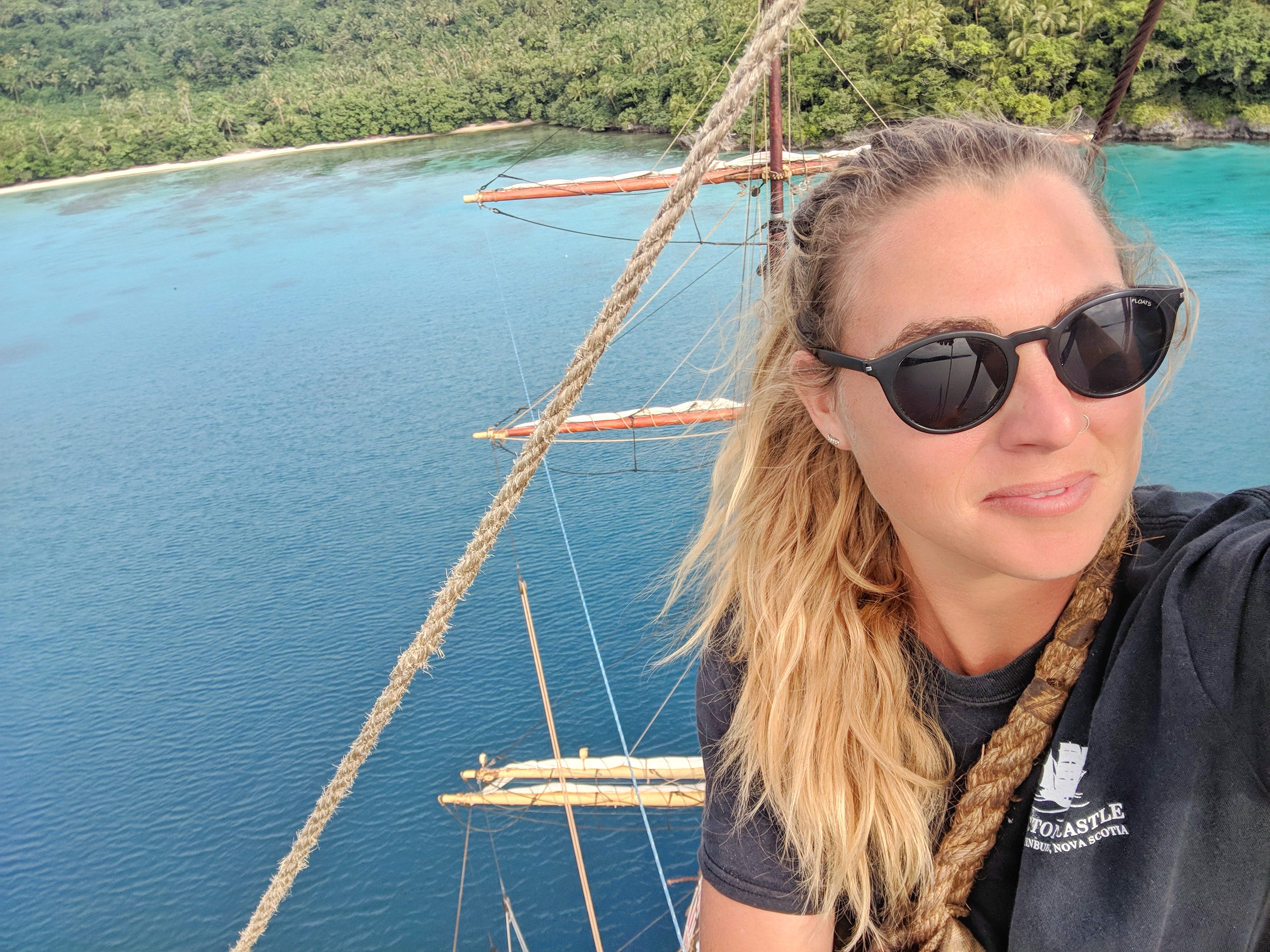
If you’re anything like our team here at Uproxx Life, your nostalgic travel fantasies likely include delusions of grandeur on the high seas. Would you be living the pirate life like Steve Bramucci? Defending indigenous populations from foreign invaders like Zach Johnston? Or perhaps you’d be a murder-for-hire bounty hunter like Allison Sanchez. My own daydreams usually involve blockade running on the swiftest ship in the fleet, and then navigating the supplies to far off lands in need of shipments. But alas, the sailing life was and always would be a pipedream, right? I mean, in the age of supertankers, mega yachts and cruise ships who lives on a tall ship anymore?
Well, turns out there are a handful of badasses actually pursuing this bold endeavor on the ocean tides. Meet Erin Greig, Chief Mate on the Picton Castle, a square rig tall ship that is currently on its seventh circumnavigation of the globe. Though it was recently docked in my hometown of New Orleans, I caught up with Erin between weeklong legs in the South Pacific to find out what life is like on board an old world-esque maritime vessel.
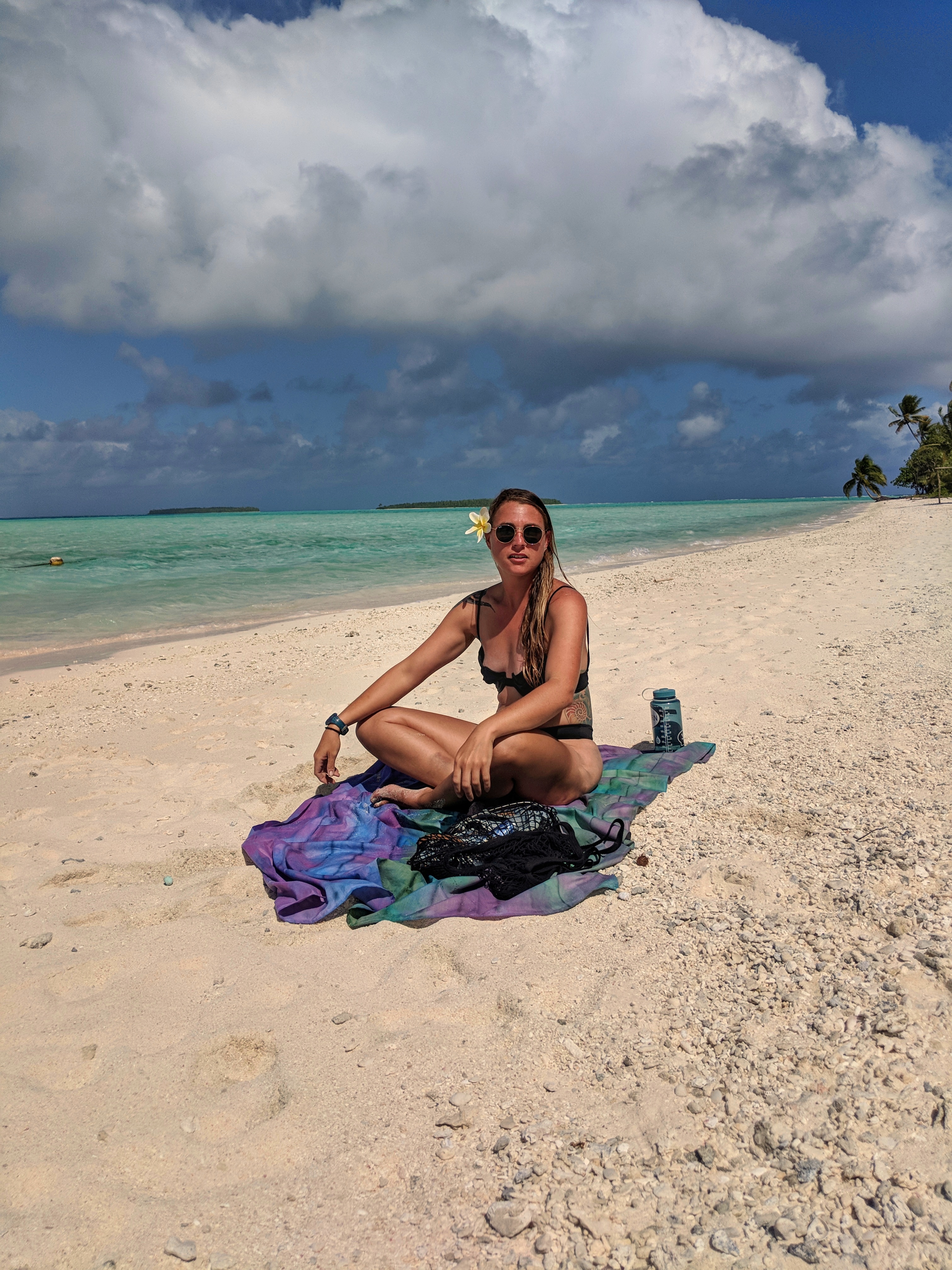
Erin, can you start by telling us about who you are and where you’re from?
I am a navigational officer and Chief Mate of the traditional sailing ship Picton Castle. I was born and raised on the island of Bermuda and can be found circumnavigating the globe in tropical latitudes.
What are the main purposes of the Picton Castle?
Picton Castle is a sail training ship that sails around the world with a crew of twelve professional mariners and thirty-six trainees, of all ages, passing on the skills and traditions of the Age of Sail. We also, whenever possible, transport cargo to islands in the South Pacific, which may only receive supply shipments three or four times a year.
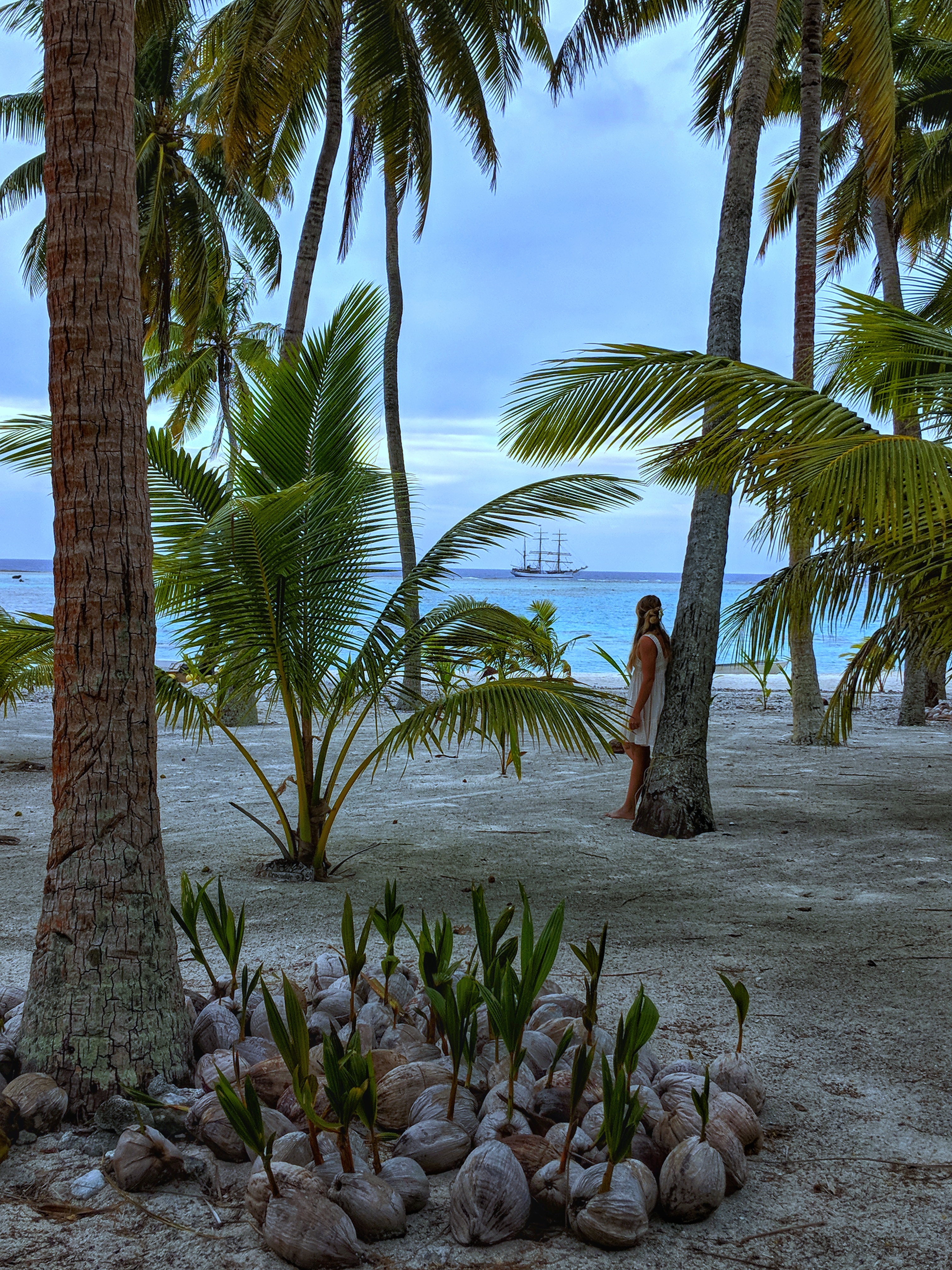
What are the duties of the Chief Mate? What is a typical sea day like on the Picton Castle?
As Chief Mate, I run the vessel — in so far as maintenance, crew organization, and navigation. An average day at sea starts at 3:15 am when I awake to stand watch from 4 am to 8. During these times I’m guiding the helmsman on where to steer, tracking weather and setting sail accordingly. At 8 am, I am relieved by the 2nd Mate. I go for breakfast and then will monitor the ship’s work throughout the day. Maybe I get to do a bit of sail making myself. I’ll catch a nap after lunch before I am needed back on deck at 4pm, the time when the Captain or myself will hold a workshop for the crew. Generally, it can be teaching them rope-work, seamanship skills or navigational components. I’m still on duty when dinner is served, and at 8 pm, when I am once again relieved, I will dive straight down to my cabin for some much need sleep.
How about a standard port day?
When we are in port we have a fantastic rotation of one day on two days off. After we spend twenty-four hours aboard, doing what the ship needs and keeping her safe, we are allowed to explore unique countries and islands for up to forty-eight hours before we will be required to return back aboard. Having the most responsibility after the captain, I’m generally around more than that. However, few other maritime jobs give you so much time ashore.
Describe briefly to a layman (like me) how square rig is essentially different to more traditional sailing or boating?
Sailing a square rig ship around the world is different in so many ways. The community you sail with, the attention to detail required to sail a ship like the Picton Castle and the innate responsibility that the ship fosters to care for her, your shipmates and yourself is completely unique than to doing what we would do on a yacht. The program has been facilitating these voyages for twenty years. So, in the ports we return to are always locals who anticipate our arrival. It gives us a rare look into their cultures which makes our time ashore even more incredible.
How is it that you initially got into square rig sailing, was it always an interest or something that came along?
When I finished high school on my small island home I was craving to explore as many countries and cultures as I possibly could. So I signed up for a high school at sea and spent ten months sailing the Atlantic. I then did what I thought I was supposed to do: Enrolled in University in Nova Scotia Canada. However, I couldn’t shake the bug. I took another gap year to try sailing as a professional. Now, I tell people I’m still on my gap year ten years later.
Most of us are always connected these days. Is it refreshing or annoying to be unplugged — off-the-grid — for weeks on end?
You quickly realize what and who really matters out there once you are disconnected for weeks at a time. Odds are that the news isn’t as important as you are made to believe with daily exposure to it. The people that most value you make the effort to write emails and keep you in the loop. You also have the opportunity to grow these uniquely deep relationships with people aboard the ship because you have their undivided attention. Being out at sea is really getting what many of us seek online, which is a rich connection with people and nature.
https://www.instagram.com/p/Bm4KWkqB-HH/?hl=en&taken-by=fairwindsandwanderings
A year is a long time to be at sea, do crew members put relationships on hold? Or do you have to tell friends and family to check the Captain’s Log and instagram/fb?
Some people find committing to leave for a year to be a huge deal. We have people aboard who had loved ones encourage them to live out their dreams of sailing the world and I find that to be encouraging. Having been away from home for the majority of my career, I can say that the reward of what we do here makes up for leaving friends and family ashore. The hardest thing is experiencing a year like this and going home to where not much as changed.
What do you miss the most about shore life on the boat?
I’d say one thing I do miss is being able to go home after work and disengage from it. Being on the ship means your work follows you 24/7. That and an endless shower every now and then would be divine.
Give me your best elevator pitch for joining the crew for a leg!
It’ll be physically demanding in ways you won’t expect, the days will be long and mostly hot, you’ll probably get sea-sick in the beginning and you’ll get tired of cleaning heads and dishes while spending sometimes weeks at sea in-between ports. If all that doesn’t dissuade you then you might just be the right candidate. Despite all that, the trip is completely worth it, after all, the view from the office is unparalleled.
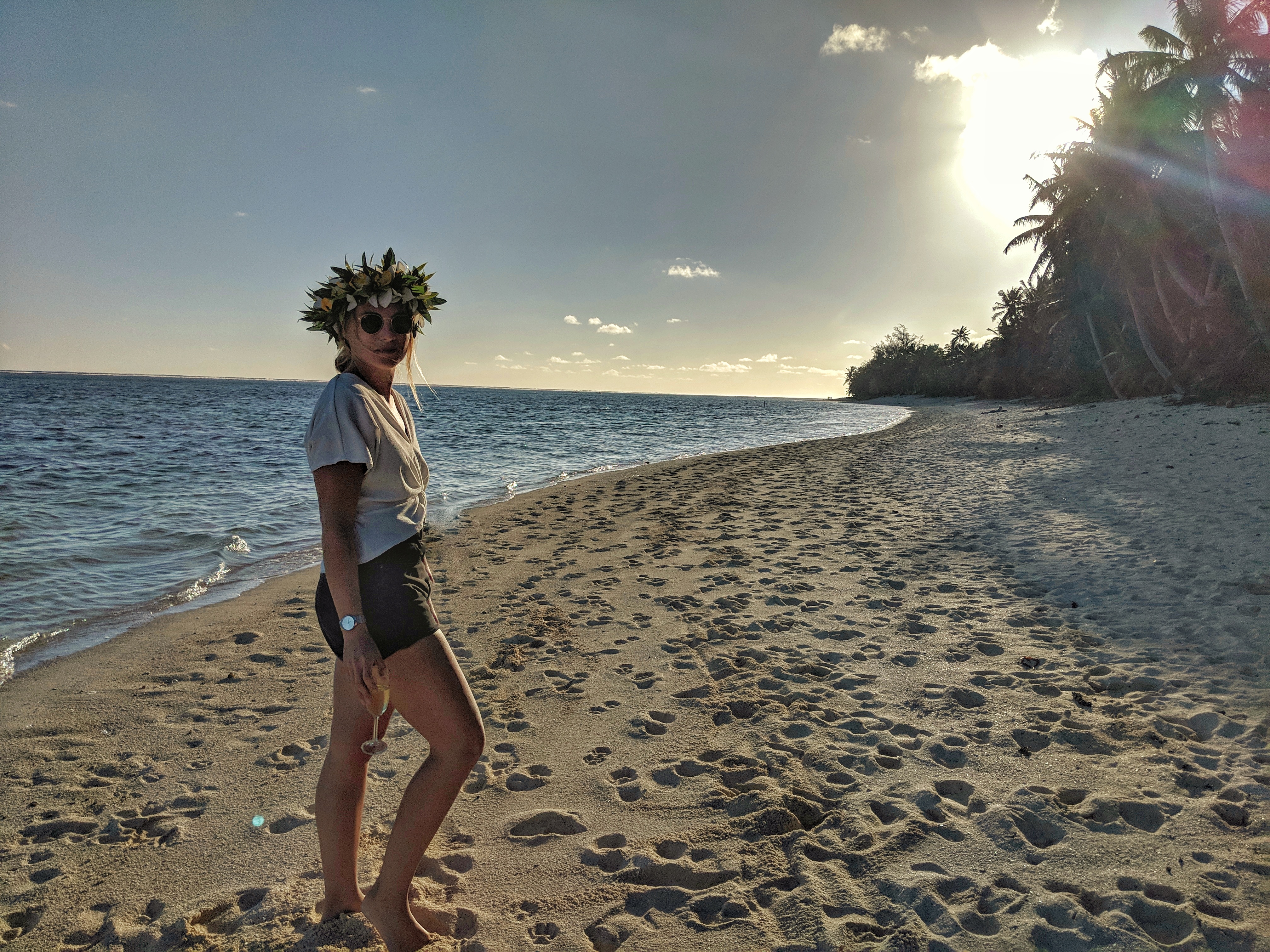
If a reader is interested in signing up for life on square rig vessel, what should they absolutely know before casting off?
Your autonomy will be removed. Washing dishes might be the only task in which you’re extremely proficient, at first. You will grow but only if you fully embrace every new opportunity that comes your way. Yet, if you learn the ropes, be a kind shipmate and say yes to whatever good time the locals are offering, the experience will be rewarding beyond your wildest dreams.
Do you see the trainees change their behavior in regard to distraction from when they come aboard to when they leave?
It’s a difficult thing for me to pinpoint because I see them slowly evolve everyday. I know from personal experience that they’ll notice how they’ve greatly transformed once they’ve returned home. That reflection tends to be the strongest, when you realize what you just did: Sailing the world with this new lexicon — learned by sailing the ship — spending weeks at a time with an endless horizon, not hearing from any of the outside world. That was all reality too, in some cases more so than their former day-to-day occupations. Though, it can actually be tough for some when their loved ones cannot relate or comprehend their journey.
Recount to us what happens when you arrive at Palmerston Atoll. When you mentioned it to me in email, it rang like one of those “difficult-to-comprehend” adventures.
Palmerston Atoll, along with many of the South Pacific Islands, were visited by western exploring vessels beginning as early as the 16th century. Most of our concepts of the magical south seas stem from sailors who would go ashore in these places. They’d be taken in by the local people and shown a level of hospitality unheard of anywhere else. The bounty of fresh fruits, the laid-back mentality of the people, and their willingness to share what they had is what inspired mariners to join these long, arduous voyages.
Palmerston Atoll was discovered by Captain Cook in 1774, but was found to be uninhabited. In 1863, an Englishman by the name of Marsters and three Maori women settled here. His descendants still live here today. The population is roughly fifty people and they share a long-standing relationship with hosting visiting ships. Our captain was first here in the late 70s as a young officer on a sailing ship. He has since been back eight times in the last twenty years after becoming established on his own ship. So we get the royal treatment of their hosting skills: Accommodation with families ashore; constant bonfires; and an out of this world food experience. Yes, they do take visiting yachtmen ashore as well, to host them, but usually not to this degree due to our long-standing history. Imagine anchoring off a deep, blue lagoon in a square rig ship, trade winds blowing you off the barrier reef, and then a fleet of small aluminum boats –which are cutting through the narrow passes – arrive. On the beach, they divvy you up between the families, wisk you straight into their homes and sit you at their home table with a cup of tea. It just doesn’t happen every day. It’s an identical reflection of what these islanders would have done back in the day. Wild right?!
Are there any other extremely unique adventures like that?
One of my greatest passions, and reasons for being aboard, is keeping that last link of the Age of Sail attainable to us in the present day. It’s not just what we do that’s so cool, but more so that we are the last ship in the world doing these long circumnavigations, following the paths of many a sailing ship before us. Through the study of old photographs and research, I geek out that the physical details of our ship and our rigging are akin.
For someone more interested in the cultural implications that these trips offer, there is a plethora of stimulation. Homestays on Pictairn island with descendants of the HMS Bounty, small boat sailing and pearl trading in French Polynesia, anchoring in a small bay off Vanuatu — where the captain must go ashore to ask the chief of the local tribe for permission for us to visit — are examples. Other experiences include exploring a funky German town on the edge of the Namibian desert, visiting the island in the South Atlantic to where Napoleon Bonaparte was exiled or learning to play dominos on the side of the road on small island in the Grenadines –- which is next to the last wooden boat-builder in the entire Caribbean. These are all unique experiences, but sharing all of these incredible things with the same crew you rely on every day means a lot. They’re the ones who get you there safely and who you are looking out for when it’s your trick at the helm. I mean, that first beer ashore after spending the previous day painting the ship’s hull in the tropical heat is just so, so sweet. These aren’t staged port programs, mind you, they just happen because of our long-standing history together.
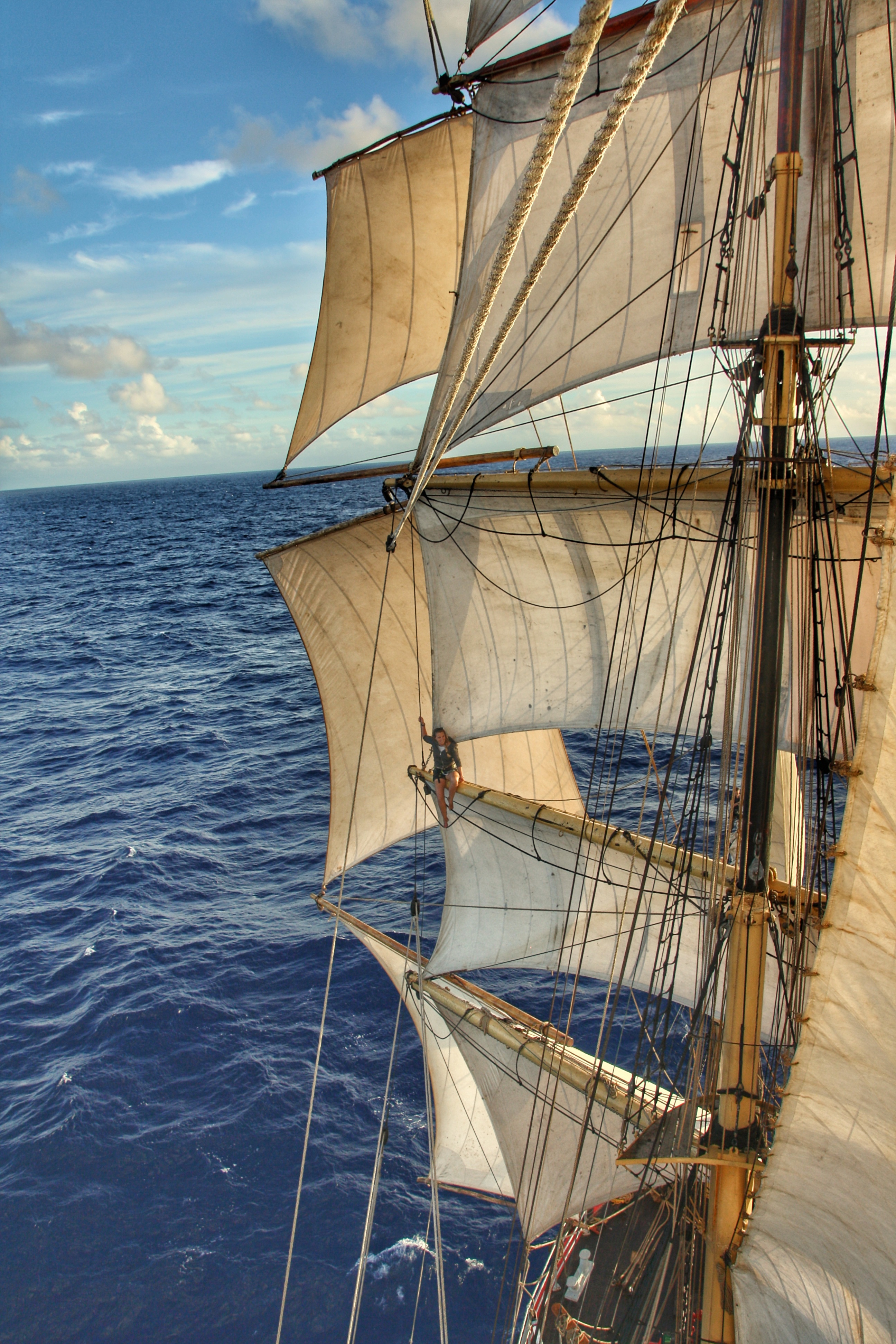
What is one sea superstition that is definitely true, or at least, that you definitely follow?
Red Sky at night sailors delight. Red Sky in the morning sailors take warning.
What is the secret to sea photography?
You’ll never truly capture the magnitude of large swells and waves. However, it’s impossible to take a bad shot at the golden hours of sunrise and sunset, especially with an endless horizon.
Will you continue square rig sailing after this tour on another ship? Do you see yourself on the seas forever?
My career for the foreseeable future will be at sea, I want to achieve the highest level of qualifications, which would be a Master Mariner. If I could do most of my time under sail on ships such as Picton Castle, I would be thrilled. But, I’m also open to trying commercial shipping or yachting. That’s one of the great things about a career in the Maritime world, there is such a variety of ships to sail. I’m well aware of the grueling commitment that this life brings, so I’d forgive myself if I decided to “swallow the anchor” – aka lead a shore life. At the moment, though, I’m enjoying this path immensely.
Is there a saying for good luck in ship vernacular?
“Fair winds and following seas” is the classic well wish.
https://www.instagram.com/p/BlqoXZsh6Vh/?taken-by=fairwindsandwanderings
https://www.instagram.com/p/BmJdDaohO1B/?taken-by=fairwindsandwanderings
You can follow Erin on instagram @fairwindsandwanderings and the Picton Castle @pictoncastle.






